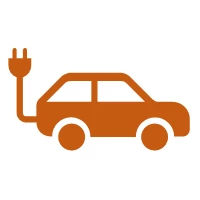Electric Ship Market By Type (Fully Electric and Hybrid), By System (Energy Storage Systems, Power Conversion, Power Generation, and Power Distribution), By Mode of Operation (Manned, Remotely Operated and Autonomous), By Ship Type (Commercial and Defence), By Power (<75 kW, 75-150 kW, 151-745 kW, and 756-7,560 kW), By Range (1,000 km), By End Use (Newbuild and Line Fit, and Retrofits), and By Region – Global Opportunities and Forecast, 2020-2027
1. Executive Summary
1.1. Key Market Insights
2. Introduction
2.1. Study Objectives
2.2. Market Definition
2.2.1. Market Covered
2.2.2. Regional Coverage
2.2.3. Study Years & Currency
2.3. Market Stakeholders
2.4. Key Questions this Study will Answer
2.5. GMI Research’s Approach & Methodology
2.5.1. Research Data
2.5.2. Primary Data
2.5.3. Demand Side and Supply Side Analysis
2.5.4. Market Light Source Estimation
2.5.5. Research Assumptions
3. Global Electric Ship Market- Overview
3.1. Introduction
3.2. Market Segmentation
3.3. Value Chain Analysis
3.4. Market Drivers
3.5. Market Restraints
3.6. Market Trends
4. Global Electric Ship Market Revenue Forecast till 2027
5. Global Electric Ship Market by Type Revenue Forecast till 2027
5.1. Fully Electric
5.1.1. Lithium Battery
5.1.2. Lead Acid Battery
5.1.3. Electro-Solar
5.1.4. Fuel Cells
5.2. Hybrid
5.2.1. Diesel & Battery Driven
5.2.2. LPG/LNG & Battery Driven
6. Global Electric Ship Market by System Revenue Forecast till 2027
6.1. Energy Storage Systems
6.1.1. <1,000 kW
6.1.2. 1,000 - 5,000 kW
6.1.3. >5,000 kW
6.2. Power Conversion
6.3. Power Generation
6.3.1. Generators
6.3.2. Engines
6.3.3. Propulsion Motors
6.4. Power Distribution
7. Global Electric Ship Market by Mode of Operation Revenue Forecast till 2027
7.1. Manned
7.2. Remotely Operated
7.3. Autonomous
8. Global Electric Ship Market by Ship Type Revenue Forecast till 2027
8.1. Commercial
8.1.1. Passenger Vessels
8.1.1.1. Yachts
8.1.1.2. Ferries
8.1.1.3. Cruise Ships
8.1.2. Cargo Vessels
8.1.2.1. Container Vessels
8.1.2.2. Bulk Vessels
8.1.2.3. Tankers
8.1.2.4. General Cargo Ships
8.1.3. Others
8.1.3.1. Fishing Vessels
8.1.3.2. Dredgers
8.1.3.3. Tugs, & Workboats
8.1.3.4. Research Vessels
8.1.3.5. Submarine
8.2. Defence
8.2.1. Destroyers
8.2.2. Frigates
8.2.3. Corvettes
8.2.4. Offshore Support Vessels (OSV)
8.2.5. Aircraft Carriers
8.2.6. Submarine
9. Global Electric Ship Market by Power Revenue Forecast till 2027
9.1. <75 kW
9.2. 75-150 kW
9.3. 151-745 kW
9.4. 756-7,560 kW
10. Global Electric Ship Market by Range Revenue Forecast till 2027
10.1. <50 km
10.2. 50-100 km
10.3. 101-1,000 km
10.4. >1,000 km
11. Global Electric Ship Market by End Use Revenue Forecast till 2027
11.1. Newbuild and Line Fit
11.2. Retrofits
12. Global Electric Ship Market by Region Revenue Forecast till 2027
12.1. North America Electric Ship Market Revenue Forecast till 2027
(Option 1: As a part of the free 25% customization)
12.1.1. North America Electric Ship Market by Type
12.1.1.1. Fully Electric
12.1.1.1.1. Lithium Battery
12.1.1.1.2. Lead Acid Battery
12.1.1.1.3. Electro-Solar
12.1.1.1.4. Fuel Cells
12.1.1.2. Hybrid
12.1.1.2.1. Diesel & Battery Driven
12.1.1.2.2. LPG/LNG & Battery Driven
12.1.2. North America Electric Ship Market by System
12.1.2.1. Energy Storage Systems
12.1.2.1.1. <1,000 kW
12.1.2.1.2. 1,000 - 5,000 kW
12.1.2.1.3. >5,000 kW
12.1.2.2. Power Conversion
12.1.2.3. Power Generation
12.1.2.3.1. Generators
12.1.2.3.2. Engines
12.1.2.3.3. Propulsion Motors
12.1.2.4. Power Distribution
12.1.3. North America Electric Ship Market by Mode of Operation
12.1.3.1. Manned
12.1.3.2. Remotely Operated
12.1.3.3. Autonomous
12.1.4. North America Electric Ship Market by Ship Type
12.1.4.1. Commercial
12.1.4.1.1. Passenger Vessels
12.1.4.1.1.1. Yachts
12.1.4.1.1.2. Ferries
12.1.4.1.1.3. Cruise Ships
12.1.4.1.2. Cargo Vessels
12.1.4.1.2.1. Container Vessels
12.1.4.1.2.2. Bulk Vessels
12.1.4.1.2.3. Tankers
12.1.4.1.2.4. General Cargo Ships
12.1.4.1.3. Others
12.1.4.1.3.1. Fishing Vessels
12.1.4.1.3.2. Dredgers
12.1.4.1.3.3. Tugs, & Workboats
12.1.4.1.3.4. Research Vessels
12.1.4.1.3.5. Submarine
12.1.4.2. Defence
12.1.4.2.1. Destroyers
12.1.4.2.2. Frigates
12.1.4.2.3. Corvettes
12.1.4.2.4. Offshore Support Vessels (OSV)
12.1.4.2.5. Aircraft Carriers
12.1.4.2.6. Submarine
12.1.5. North America Electric Ship Market by Power
12.1.5.1. <75 kW
12.1.5.2. 75-150 kW
12.1.5.3. 151-745 kW
12.1.5.4. 756-7,560 kW
12.1.6. North America Electric Ship Market by Range
12.1.6.1. <50 km
12.1.6.2. 50-100 km
12.1.6.3. 101-1,000 km
12.1.6.4. >1,000 km
12.1.7. North America Electric Ship Market by End Use
12.1.7.1. Newbuild and Line Fit
12.1.7.2. Retrofits
12.1.8. United States of America (US) Electric Ship Market All-Up
12.1.9. Canada Electric Ship Market All-Up
12.2. Europe Electric Ship Market Revenue Forecast till 2027
(Option 2: As a part of the free 25% customization)
12.2.1. Europe Electric Ship Market by Type
12.2.1.1. Fully Electric
12.2.1.1.1. Lithium Battery
12.2.1.1.2. Lead Acid Battery
12.2.1.1.3. Electro-Solar
12.2.1.1.4. Fuel Cells
12.2.1.2. Hybrid
12.2.1.2.1. Diesel & Battery Driven
12.2.1.2.2. LPG/LNG & Battery Driven
12.2.2. Europe Electric Ship Market by System
12.2.2.1. Energy Storage Systems
12.2.2.1.1. <1,000 kW
12.2.2.1.2. 1,000 - 5,000 kW
12.2.2.1.3. >5,000 kW
12.2.2.2. Power Conversion
12.2.2.3. Power Generation
12.2.2.3.1. Generators
12.2.2.3.2. Engines
12.2.2.3.3. Propulsion Motors
12.2.2.4. Power Distribution
12.2.3. Europe Electric Ship Market by Mode of Operation
12.2.3.1. Manned
12.2.3.2. Remotely Operated
12.2.3.3. Autonomous
12.2.4. Europe Electric Ship Market by Ship Type
12.2.4.1. Commercial
12.2.4.1.1. Passenger Vessels
12.2.4.1.1.1. Yachts
12.2.4.1.1.2. Ferries
12.2.4.1.1.3. Cruise Ships
12.2.4.1.2. Cargo Vessels
12.2.4.1.2.1. Container Vessels
12.2.4.1.2.2. Bulk Vessels
12.2.4.1.2.3. Tankers
12.2.4.1.2.4. General Cargo Ships
12.2.4.1.3. Others
12.2.4.1.3.1. Fishing Vessels
12.2.4.1.3.2. Dredgers
12.2.4.1.3.3. Tugs, & Workboats
12.2.4.1.3.4. Research Vessels
12.2.4.1.3.5. Submarine
12.2.4.2. Defence
12.2.4.2.1. Destroyers
12.2.4.2.2. Frigates
12.2.4.2.3. Corvettes
12.2.4.2.4. Offshore Support Vessels (OSV)
12.2.4.2.5. Aircraft Carriers
12.2.4.2.6. Submarine
12.2.5. Europe Electric Ship Market by Power
12.2.5.1. <75 kW
12.2.5.2. 75-150 kW
12.2.5.3. 151-745 kW
12.2.5.4. 756-7,560 kW
12.2.6. Europe Electric Ship Market by Range
12.2.6.1. <50 km
12.2.6.2. 50-100 km
12.2.6.3. 101-1,000 km
12.2.6.4. >1,000 km
12.2.7. Europe Electric Ship Market by End Use
12.2.7.1. Newbuild and Line Fit
12.2.7.2. Retrofits
12.2.8. United Kingdom (UK) Electric Ship Market All-Up
12.2.9. Germany Electric Ship Market All-Up
12.2.10. France Electric Ship Market All-Up
12.2.11. Spain Electric Ship Market All-Up
12.2.12. Rest of Europe Electric Ship Market All-Up
12.3. Asia-Pacific Electric Ship Market Revenue Forecast till 2027
(Option 3: As a part of the free 25% customization)
12.3.1. Asia-Pacific Electric Ship Market by Type
12.3.1.1. Fully Electric
12.3.1.1.1. Lithium Battery
12.3.1.1.2. Lead Acid Battery
12.3.1.1.3. Electro-Solar
12.3.1.1.4. Fuel Cells
12.3.1.2. Hybrid
12.3.1.2.1. Diesel & Battery Driven
12.3.1.2.2. LPG/LNG & Battery Driven
12.3.2. Asia-Pacific Electric Ship Market by System
12.3.2.1. Energy Storage Systems
12.3.2.1.1. <1,000 kW
12.3.2.1.2. 1,000 - 5,000 kW
12.3.2.1.3. >5,000 kW
12.3.2.2. Power Conversion
12.3.2.3. Power Generation
12.3.2.3.1. Generators
12.3.2.3.2. Engines
12.3.2.3.3. Propulsion Motors
12.3.2.4. Power Distribution
12.3.3. Asia-Pacific Electric Ship Market by Mode of Operation
12.3.3.1. Manned
12.3.3.2. Remotely Operated
12.3.3.3. Autonomous
12.3.4. Asia-Pacific Electric Ship Market by Ship Type
12.3.4.1. Commercial
12.3.4.1.1. Passenger Vessels
12.3.4.1.1.1. Yachts
12.3.4.1.1.2. Ferries
12.3.4.1.1.3. Cruise Ships
12.3.4.1.2. Cargo Vessels
12.3.4.1.2.1. Container Vessels
12.3.4.1.2.2. Bulk Vessels
12.3.4.1.2.3. Tankers
12.3.4.1.2.4. General Cargo Ships
12.3.4.1.3. Others
12.3.4.1.3.1. Fishing Vessels
12.3.4.1.3.2. Dredgers
12.3.4.1.3.3. Tugs, & Workboats
12.3.4.1.3.4. Research Vessels
12.3.4.1.3.5. Submarine
12.3.4.2. Defence
12.3.4.2.1. Destroyers
12.3.4.2.2. Frigates
12.3.4.2.3. Corvettes
12.3.4.2.4. Offshore Support Vessels (OSV)
12.3.4.2.5. Aircraft Carriers
12.3.4.2.6. Submarine
12.3.5. Asia-Pacific Electric Ship Market by Power
12.3.5.1. <75 kW
12.3.5.2. 75-150 kW
12.3.5.3. 151-745 kW
12.3.5.4. 756-7,560 kW
12.3.6. Asia-Pacific Electric Ship Market by Range
12.3.6.1. <50 km
12.3.6.2. 50-100 km
12.3.6.3. 101-1,000 km
12.3.6.4. >1,000 km
12.3.7. Asia-Pacific Electric Ship Market by End Use
12.3.7.1. Newbuild and Line Fit
12.3.7.2. Retrofits
12.3.8. China Electric Ship Market All-Up
12.3.9. India Electric Ship Market All-Up
12.3.10. Japan Electric Ship Market All-Up
12.3.11. Rest of APAC Electric Ship Market All-Up
12.4. Rest of the World Electric Ship Market Revenue Forecast till 2027
(Option 4: As a part of the free 25% customization)
12.4.1. Rest of the World Electric Ship Market by Type
12.4.1.1. Fully Electric
12.4.1.1.1. Lithium Battery
12.4.1.1.2. Lead Acid Battery
12.4.1.1.3. Electro-Solar
12.4.1.1.4. Fuel Cells
12.4.1.2. Hybrid
12.4.1.2.1. Diesel & Battery Driven
12.4.1.2.2. LPG/LNG & Battery Driven
12.4.2. Rest of the World Electric Ship Market by System
12.4.2.1. Energy Storage Systems
12.4.2.1.1. <1,000 kW
12.4.2.1.2. 1,000 - 5,000 kW
12.4.2.1.3. >5,000 kW
12.4.2.2. Power Conversion
12.4.2.3. Power Generation
12.4.2.3.1. Generators
12.4.2.3.2. Engines
12.4.2.3.3. Propulsion Motors
12.4.2.4. Power Distribution
12.4.3. Rest of the World Electric Ship Market by Mode of Operation
12.4.3.1. Manned
12.4.3.2. Remotely Operated
12.4.3.3. Autonomous
12.4.4. Rest of the World Electric Ship Market by Ship Type
12.4.4.1. Commercial
12.4.4.1.1. Passenger Vessels
12.4.4.1.1.1. Yachts
12.4.4.1.1.2. Ferries
12.4.4.1.1.3. Cruise Ships
12.4.4.1.2. Cargo Vessels
12.4.4.1.2.1. Container Vessels
12.4.4.1.2.2. Bulk Vessels
12.4.4.1.2.3. Tankers
12.4.4.1.2.4. General Cargo Ships
12.4.4.1.3. Others
12.4.4.1.3.1. Fishing Vessels
12.4.4.1.3.2. Dredgers
12.4.4.1.3.3. Tugs, & Workboats
12.4.4.1.3.4. Research Vessels
12.4.4.1.3.5. Submarine
12.4.4.2. Defence
12.4.4.2.1. Destroyers
12.4.4.2.2. Frigates
12.4.4.2.3. Corvettes
12.4.4.2.4. Offshore Support Vessels (OSV)
12.4.4.2.5. Aircraft Carriers
12.4.4.2.6. Submarine
12.4.5. Rest of the World Electric Ship Market by Power
12.4.5.1. <75 kW
12.4.5.2. 75-150 kW
12.4.5.3. 151-745 kW
12.4.5.4. 756-7,560 kW
12.4.6. Rest of the World Electric Ship Market by Range
12.4.6.1. <50 km
12.4.6.2. 50-100 km
12.4.6.3. 101-1,000 km
12.4.6.4. >1,000 km
12.4.7. Rest of the World Electric Ship Market by End Use
12.4.7.1. Newbuild and Line Fit
12.4.7.2. Retrofits
12.4.8. Brazil Electric Ship Market All-Up
12.4.9. South Africa Electric Ship Market All-Up
12.4.10. Saudi Arabia Electric Ship Market All-Up
12.4.11. UAE Electric Ship Market All-Up
12.4.12. Rest of world (remaining countries of the LAMEA region) Electric Ship Market All-Up
13. Competitive Landscape Analysis
13.1. Porter’s Five Forces Analysis
13.2. Industry – Competitive Landscape
13.3. Market Presence (Intensity Mapping)
13.4. Key Strategic Market Developments
14. Company Profiles (Option 5: As a part of the free 25% Customization - Profiles of 5 Additional Companies of your Choice)
14.1. Wartsila Corporation
14.1.1. Company Overview
14.1.2. Key Executives
14.1.3. Footprint & Employee Strength
14.1.4. Product Offerings
14.1.5. Financials
14.1.6. Key Company Developments
14.2. Kongsberg Gruppen
14.2.1. Company Overview
14.2.2. Key Executives
14.2.3. Footprint & Employee Strength
14.2.4. Product Offerings
14.2.5. Financials
14.2.6. Key Company Developments
14.3. General Electric
14.3.1. Company Overview
14.3.2. Key Executives
14.3.3. Footprint & Employee Strength
14.3.4. Product Offerings
14.3.5. Financials
14.3.6. Key Company Developments
14.4. Vard Group AS
14.4.1. Company Overview
14.4.2. Key Executives
14.4.3. Footprint & Employee Strength
14.4.4. Product Offerings
14.4.5. Financials
14.4.6. Key Company Developments
14.5. Siemens AG
14.5.1. Company Overview
14.5.2. Key Executives
14.5.3. Footprint & Employee Strength
14.5.4. Product Offerings
14.5.5. Financials
14.5.6. Key Company Developments
14.6. Leclanche SA
14.6.1. Company Overview
14.6.2. Key Executives
14.6.3. Footprint & Employee Strength
14.6.4. Product Offerings
14.6.5. Financials
14.6.6. Key Company Developments
14.7. BAE Systems plc
14.7.1. Company Overview
14.7.2. Key Executives
14.7.3. Footprint & Employee Strength
14.7.4. Product Offerings
14.7.5. Financials
14.7.6. Key Company Developments
14.8. Norwegian Electric Systems
14.8.1. Company Overview
14.8.2. Key Executives
14.8.3. Footprint & Employee Strength
14.8.4. Product Offerings
14.8.5. Financials
14.8.6. Key Company Developments
14.9. MAN Energy Solutions SE
14.9.1. Company Overview
14.9.2. Key Executives
14.9.3. Footprint & Employee Strength
14.9.4. Product Offerings
14.9.5. Financials
14.9.6. Key Company Developments
14.10. General Dynamics Electric Boat
14.10.1. Company Overview
14.10.2. Key Executives
14.10.3. Footprint & Employee Strength
14.10.4. Product Offerings
14.10.5. Financials
14.10.6. Key Company Developments
14.11. Corvus Energy
14.11.1. Company Overview
14.11.2. Key Executives
14.11.3. Footprint & Employee Strength
14.11.4. Product Offerings
14.11.5. Financials
14.11.6. Key Company Developments
15. About GMI Research
*Details on Financials might not be available in case of unlisted/private companies.
- Published Date: Jun-2020
- Report Format: Excel/PPT
- Report Code: UP690A-00-0620
Licensing Options
Single-User License:
The report is used by the purchaser (One Individual) only
Multi-User License:Report is shared with maximum 5 users (employees) including the purchaser of the purchasing corporation only
Corporate License:
Report is shared with unlimited user (employees) of the purchasing corporation only
The report is used by the purchaser (One Individual) only
Multi-User License:Report is shared with maximum 5 users (employees) including the purchaser of the purchasing corporation only
Corporate License:
Report is shared with unlimited user (employees) of the purchasing corporation only
Electric Ship Market By Type (Fully Electric and Hybrid), By System (Energy Storage Systems, Power Conversion, Power Generation, and Power Distribution), By Mode of Operation (Manned, Remotely Operated and Autonomous), By Ship Type (Commercial and Defence), By Power (<75 kW, 75-150 kW, 151-745 kW, and 756-7,560 kW), By Range (1,000 km), By End Use (Newbuild and Line Fit, and Retrofits), and By Region – Global Opportunities and Forecast, 2020-2027
$ 4,499.00 – $ 6,649.00
Why GMI Research







